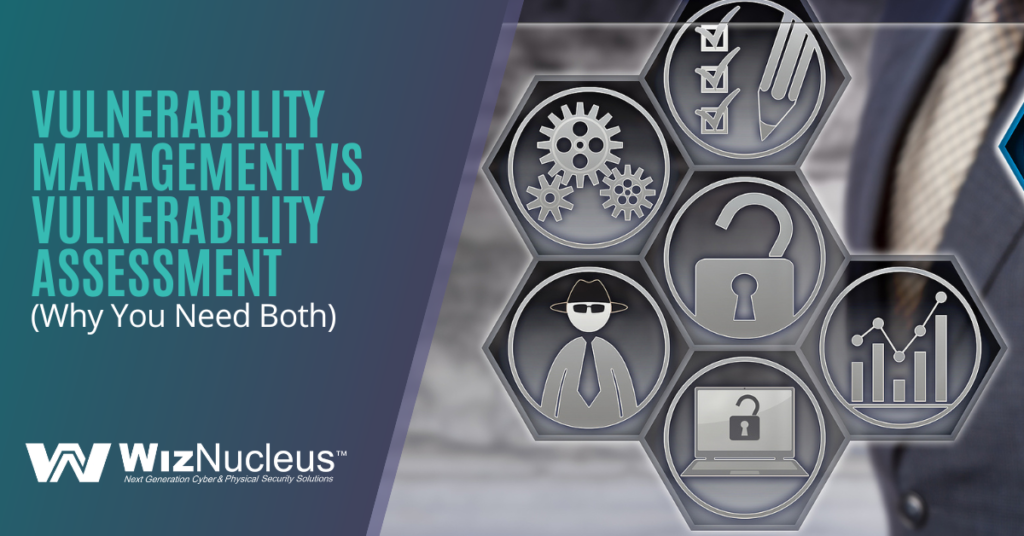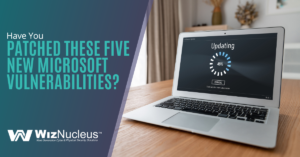One of the constant dangers that organizations need to have on their radar is vulnerabilities. These can be flaws in software code or misconfigurations of cloud tools that create an open door for hackers.
Cybercriminals are continuously on the lookout for any loophole in the code of an operating system or software application that will allow them to manipulate it to gain entry and/or control.
For example, one commonly exploited vulnerability is known as Log4Shell. Its official name is CVE-2021-44228 (CVE stands for Common Vulnerabilities and Exposures). This impacts Apache’s Log4J Library of open-source code used for logging.
A hacker can use an exploit to take advantage of this vulnerability and do things like send requests to take over full control of a system, plant ransomware, and more. This is such a troublesome vulnerability because the Log4J code exists in thousands of technology products.
Approximately 20.4% of all discovered vulnerabilities are in the high-risk or critical-risk categories.
Organizations, especially those with mission-critical facilities, have to be on alert for vulnerabilities at all times. It should be a regular part of their cybersecurity strategy.
The thing about today’s always-changing technology ecosystem is that you can’t just get rid of all vulnerabilities and expect things to stay that way. As soon as an update for software comes through, there is a risk that a code vulnerability is accidentally being introduced into the system.
We’ll take a look at two strategies for reducing the risk of a breach by proactively addressing potential network vulnerabilities.
What is Vulnerability Management?
Vulnerability management is an ongoing activity that is part of a cybersecurity strategy. It involves detecting, evaluating, treating, and reporting on any misconfigurations or vulnerabilities in a network.
Misconfiguration is when the security in a system is not set to sufficiently keep out unauthorized access. For example, email filtering might not be set up for business email, or a requirement for a login before accessing cloud-stored documents may not be set up properly.
Within vulnerability management are multiple functions that all work in coordination:
- Assessment: Systems are assessed to identify vulnerabilities.
- Evaluation & prioritization: Vulnerabilities that are found, must be evaluated for risk and prioritized, so the highest risk issues can be addressed first.
- Treatment: Actions need to be taken to eliminate the vulnerability, either by installing a software patch or fixing a misconfiguration.
- Reporting: It’s important to report and log these vulnerability issues and how they were addressed. Should any breaches or incidents happen in the future, this log will be a vital resource for compliance and forensic investigation.
- Upkeep: Part of vulnerability management is ensuring that the risk of misconfiguration and vulnerability exposure is reduced. This is done by keeping up with all system updates and security patches and having security systems assessed regularly.
What is Vulnerability Assessment?
Vulnerability assessment is the first step in vulnerability management. This means assessing the network and endpoint infrastructure of an organization for potential vulnerabilities.
Scanning and assessment are varied according to the part of the network infrastructure being assessed. For example, servers will use certain tools to scan for vulnerabilities. Software that is used in the enterprise will have a different type of scanning required to keep up with updates and any identified vulnerabilities.
Vulnerability assessment needs to be done regularly as part of a vulnerability management process. It identifies the following types of risk.
Network Weaknesses
These would be misconfigurations in the network that allow for the existence of vulnerabilities and that invite exploitation by bad actors. For example, if there were faulty authentication protocols that allowed a hacker to gain unauthorized access to a cloud tool.
Process Weaknesses
A process weakness could be a lack of regular updates for a network. For example, if updates and patches are installed ad hoc, this could create an environment where vulnerabilities may go unpatched, allowing a network to be breached. In this case, the process should be changed to eliminate that weakness.
Host/Server Weaknesses
Assessing hosts for vulnerabilities is on the list of highest priorities while doing a vulnerability assessment. This typically involves using specific tools that help automate the process of identifying potential vulnerabilities or places that invite exploits.
User Weaknesses
The employees that are working in systems, have applications on phones, tablets, and workstations, and access company data can also leave a network vulnerable. If employee training isn’t being done regularly enough or doesn’t include the right types of training, it can result in unforced errors caused by users.
This type of assessment could include things like a phishing simulation or a review of employee password habits to identify potential risks. When employees are well trained, it’s been found that an organization’s cyber risk can be reduced by 45-70%.
Get Started on a Path to Better Vulnerability Management
The WizNucleus team specializes in assessing and managing cybersecurity for mission-critical facilities. We can help you with a fluid vulnerability assessment and management process to reduce risk.
Contact us today to schedule a free consultation! Call +1 (646) 558-5577 (New York, NY) or +1 (469) 481-1726 (Carrollton, TX) or reach out online.





